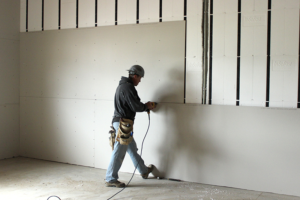Home Remodeling Spring TX breathes new life into your living space. It allows you to enhance both style and functionality.

A well-planned remodel can improve comfort and increase property value. Thoughtful updates reflect personal style while addressing practical needs.
Start by assessing how each room serves your lifestyle. A functional flow between spaces improves daily living. Open floor plans create a sense of spaciousness and connection. Defining zones within an open space maintains order and comfort.
Natural light transforms the atmosphere of a home. Expanding windows or adding skylights increases brightness and energy efficiency. Sheer curtains and light-colored walls amplify the effect. Balanced lighting enhances both form and function.
Modern home designs often feature a seamless indoor-outdoor connection. Sliding glass doors and retractable walls extend living spaces. Outdoor patios and garden spaces enhance relaxation and entertaining. Natural materials create a cohesive transition between environments.
Kitchen remodels remain one of the most impactful upgrades. Modern kitchens prioritize both aesthetics and functionality. Smart appliances and energy-efficient fixtures enhance convenience. Custom cabinetry and ample counter space improve organization and ease of use.
Bathroom updates contribute significantly to comfort and style. Walk-in showers with rainfall heads offer a spa-like experience. Heated floors and towel racks add a touch of luxury. Floating vanities create an open feel while maximizing storage.
Storage solutions are essential in maintaining a clutter-free home. Built-in shelves and hidden cabinets save space while enhancing style. Multi-functional furniture serves both practical and decorative purposes. Maximizing vertical storage helps make the most of limited square footage.
Flooring choices define the overall feel of a space. Hardwood floors create warmth, while polished concrete offers a sleek modern look. Area rugs soften the feel and add texture. Consistent flooring throughout the home enhances visual flow.
Accent walls add personality without overwhelming the space. Textured wallpaper, natural wood, or bold paint colors create a focal point. Keeping other elements simple maintains balance. A single accent wall can transform the mood of a room.
Smart home technology is becoming a standard feature in modern remodels. Automated lighting, thermostats, and security systems improve convenience. Voice-controlled devices integrate seamlessly into daily routines. Smart upgrades enhance both comfort and energy efficiency.
Furniture selection plays a key role in defining a room’s character. Clean lines and minimalist designs create a modern feel. Layering different textures and materials adds depth. Modular furniture adapts to changing needs and layouts.
Creating dedicated workspaces has become increasingly important. Built-in desks and ergonomic chairs support productivity. Soundproofing and proper lighting improve focus. A well-designed home office blends functionality with personal style.
Eco-friendly materials are gaining popularity in home design. Reclaimed wood, recycled metal, and low-VOC paints reduce environmental impact. Solar panels and energy-efficient windows decrease long-term costs. Sustainable choices align with modern aesthetics.
A cohesive color palette creates visual harmony throughout the home. Neutral tones provide a calming backdrop. Pops of color through furniture or art add interest. Matte finishes offer a sophisticated touch.
Open shelving provides both storage and display opportunities. Carefully curated decor pieces reflect personal style. Consistency in color and material maintains a clean look. Floating shelves enhance modern and minimalist aesthetics.
Lighting design transforms how a space is experienced. Layered lighting combines ambient, task, and accent sources. Dimmer switches allow for mood adjustments. Statement light fixtures act as both art and function.
Architectural details elevate the overall design. Crown molding, wainscoting, and ceiling beams add depth. Clean lines and geometric patterns enhance modern appeal. Custom trim work creates a tailored finish.
Outdoor spaces have become extensions of the home. Comfortable seating areas and weather-resistant materials enhance usability. Fire pits and outdoor kitchens encourage entertaining. Strategic landscaping provides privacy and aesthetic appeal.
Multi-purpose rooms increase flexibility and function. Murphy beds and convertible furniture adapt to changing needs. Partition walls create separation without compromising flow. Thoughtful layouts accommodate both relaxation and work.
Soundproofing enhances comfort, especially in busy households. Acoustic panels and heavy curtains absorb noise. Solid-core doors and insulated walls reduce sound transfer. A quieter home improves relaxation and sleep quality.
Renovating entryways sets the tone for the entire home. Statement doors, patterned tile, and thoughtful lighting create a welcoming feel. Built-in benches and coat racks provide convenience. A well-designed entry balances style and function.
Smart storage solutions elevate both style and efficiency. Under-stair storage, pull-out pantry shelves, and wall-mounted organizers maximize space. Furniture with hidden compartments maintains a tidy look. Custom storage solutions reflect individual needs.
Art and decor personalize a home’s interior. Framed prints, sculptures, and textiles add warmth and texture. Oversized artwork creates a focal point. Personal touches make a space feel uniquely yours.
Comfort remains a priority in modern home design. Soft textiles, plush rugs, and cozy furniture enhance relaxation. Layering textures creates depth and warmth. Thoughtful seating arrangements encourage conversation and comfort.
Windows play a critical role in home remodeling. Large panes of glass bring in natural light and frame outdoor views. Black window frames add a modern edge. Frosted glass ensures privacy while maintaining light flow.
Achieving a successful home remodel requires thoughtful planning. Balancing aesthetics and function creates a space that feels both stylish and practical. Investing in quality materials ensures long-lasting results. A well-executed remodel transforms a house into a sanctuary.
